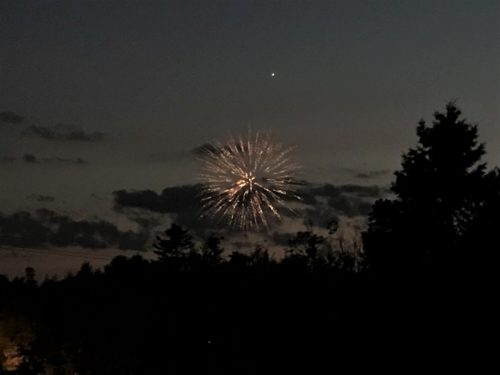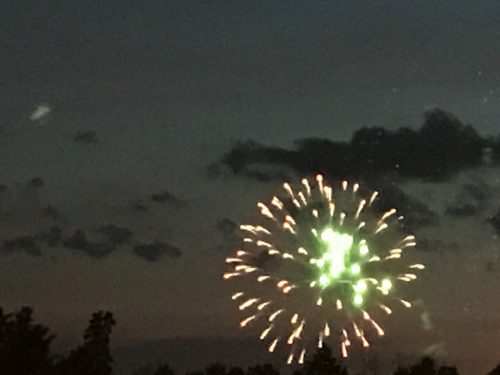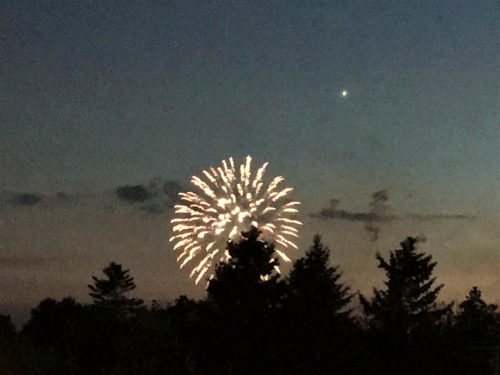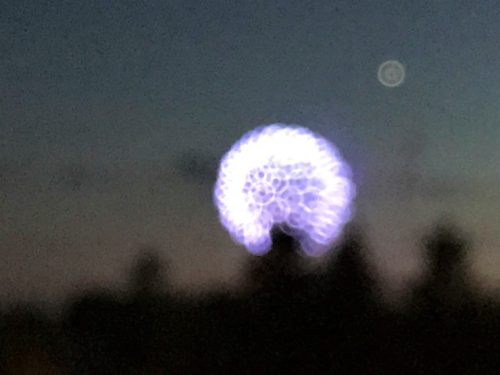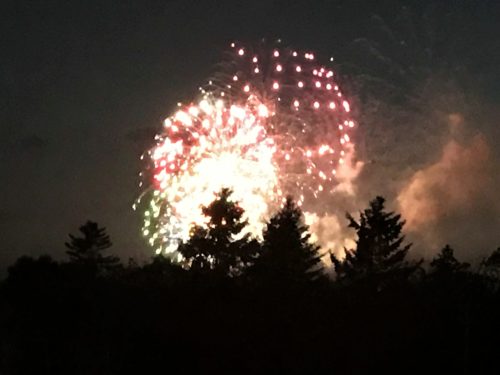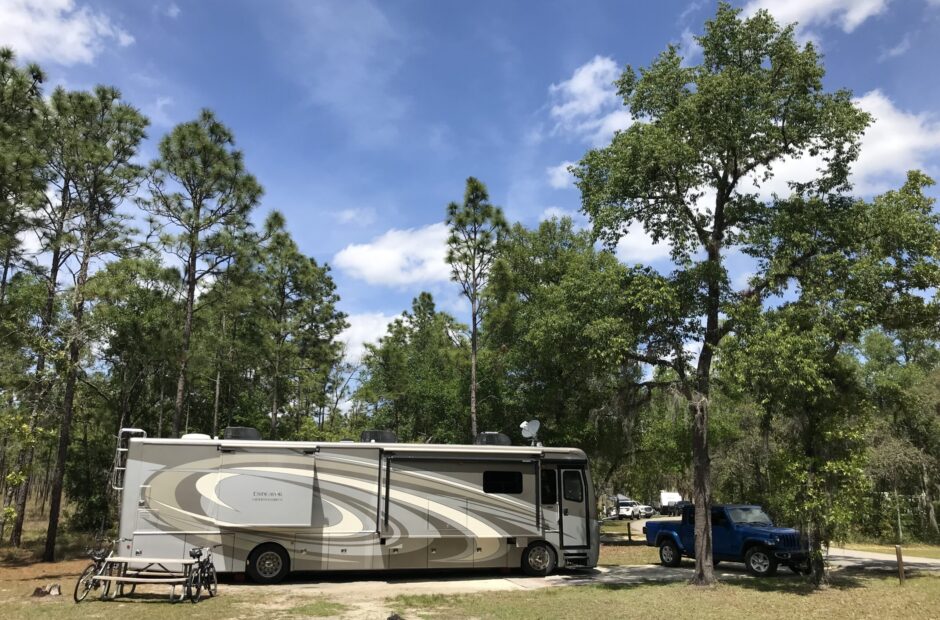Arrowhead RV Resort, Ely, Minnesota
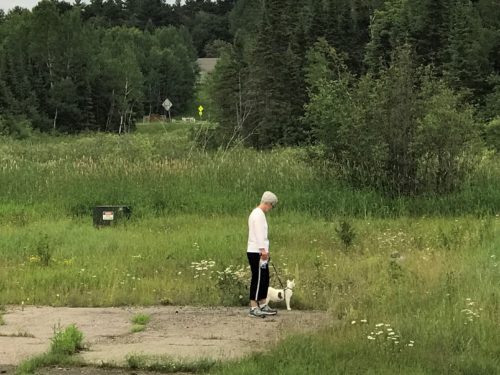
Here’s our view this morning.
This lady actually walks her cat around the campground. : )
It’s not fireworks day, or picnic day, or whatever else. It’s a day to remember and celebrate the United States of America’s independence from Great Britain. It’s a day to be thankful for our founding fathers who not only fought for independence, but gave their lives and fortunes for it. And a day to be thankful for their God-given wisdom in providing the pillars this country was built on, “among them life, liberty and the pursuit of happiness”.
Everyone knows about George and Thomas and Paul and Benjamin, and John and his unique signature. And if you’ve been reading my blog for a while, you learned something about Daniel Boone.
Wait. What? What does ol’ Dan’el have to do with the Revolutionary War?
According to the History Channel, quite a bit! We’ve been watching the History Channel’s “Men Who Built America” and just the other day, we learned about the connection between Daniel Boone, his Boonesborro settlement and their importance in the War.
I’ll condense it. Considerably. But the entire program has been really interesting, though occasionally a bit overdramatic.
The British were ticked because the Americans were managing to hold their own, so the rebellion wasn’t as easily put down as they expected. They knew the Indians were ticked because the Americans were pushing them out of their land. If you remember, Boonesboro was one of the first settlements to go west – remember Cumberland Gap?
Anyway, the Brits went to the Indians and promised them that if they got rid of the Americans by any means, they’d return their land to them.
So Blackfish, the chief who adopted Tecumseh (yeah, you’ve heard that name too, but I’m not going into that), decided they needed to start at Boonesboro. Daniel had been a captive of Blackfish, but he escaped along with the news, and got back home after days of running, in time to have the settlement prepare for the attack.
They should’ve lost. They almost did. In a last-ditch effort, Blackfish decided to send flaming arrows into the wooden fort (they should’ve done that first in my opinion), and it caught on fire. The settlers didn’t have enough water to put it out, and reinforcements were still days away.
And then God sent rain. Heavy rain. And the fire went out, and the Indians went away, and the reinforcements came, and the War continued.
How’s that for an Independence Day history lesson? 😊
Today’s objective is to visit the Soudan Mine about ½ hour away. This is the oldest and deepest mine in Minnesota. And they offer underground tours! For just twelve bucks!
First, we have to gain sustenance to be better equipped to endure our ordeal.
Blaine’s fabulous pancakes with fresh blueberries and strawberries were just the ticket!
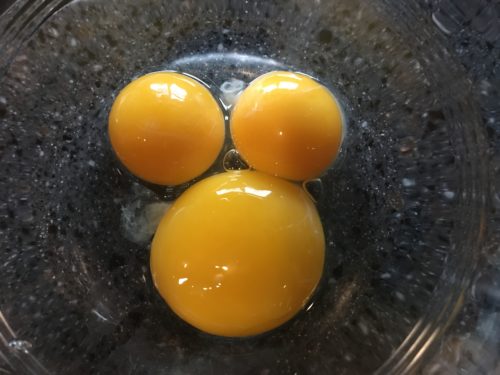
Wouldjalook at that!
It’s a jaundiced Mickey!
HaHa!


The Soudan is an indoor tour, so the fact that a thunderstorm loomed on the horizon didn’t dissuade us from venturing out. But what a storm! The sky kept getting darker and darker the further we went! And then the torrential rains came, causing us to stay in the Jeep for a bit after we arrived.
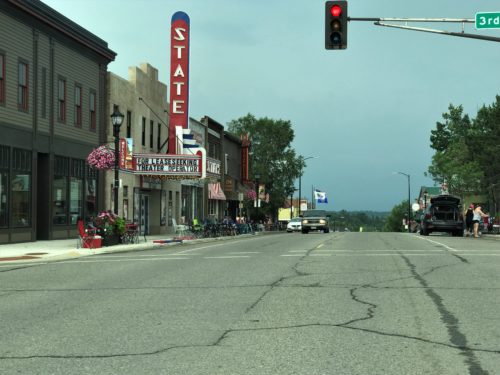
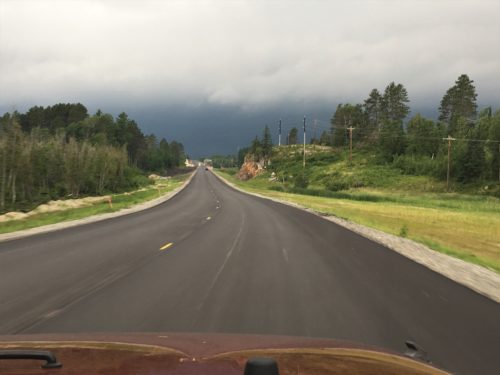
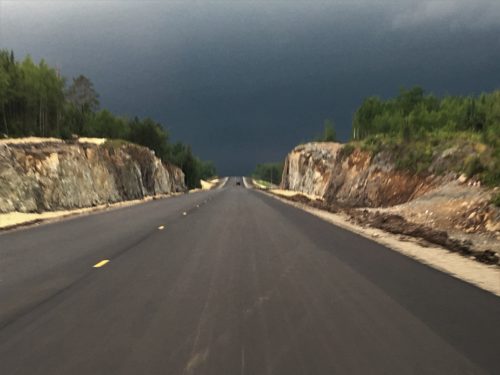
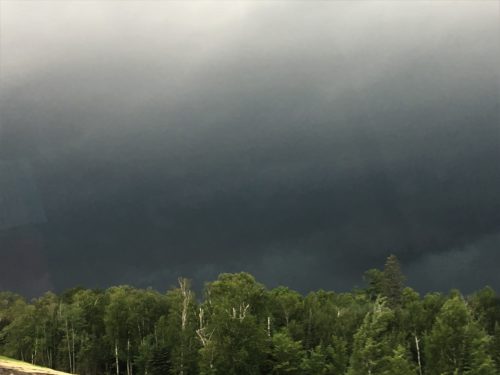
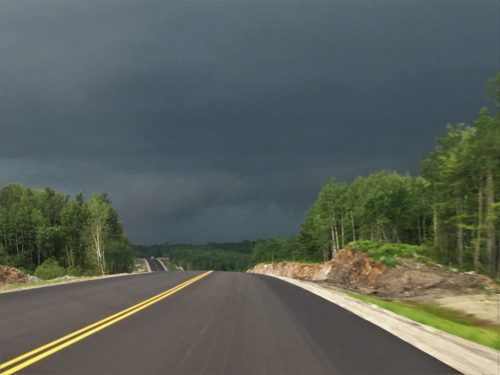
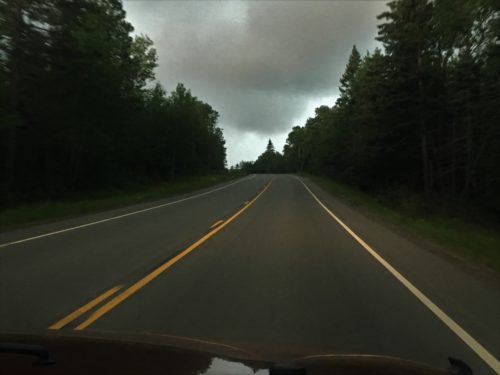
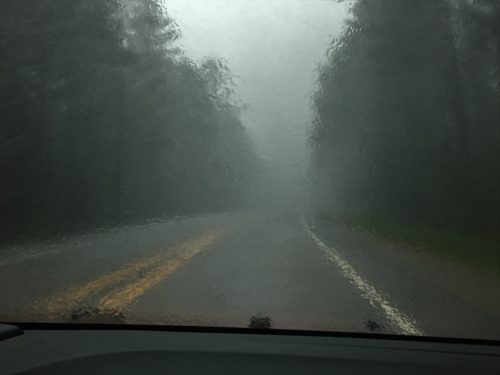
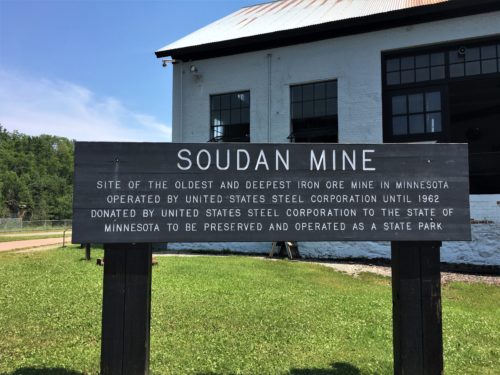
Once we got inside, we were ushered into a room to watch a short video and meet one of our guides, Carl. Besides being a former miner and lending his experience and knowledge, Carl is a very gifted story teller. He began by speaking to us in Dutch, to give us an understanding of how difficult it was for all these early mine immigrants to talk to each other, and to understand their English-speaking bosses.
And then came the bat story. Oh, my! He was pretty convincing! Telling us how 20,000 bats live in the mine and visitors disrupt them and they fly around, sometimes coming straight for your face. We’re supposed to sit still and they’ll go around, but ladies (or men) with long hair should put it up in the hard hat we’re required to wear. Otherwise, the bats get caught in it and in their attempt to get free, may choose to crawl up under the hat. When they can’t get out of there, they back out right onto your face. If you have glasses, you can just pull them off and the bat will come off with them and fly away. WOW! What a tale! He was much, much, much better than me at the telling. 😊
He then shared with us all the facts on how/why this mine was a much more secure and safer place to work due to the type of iron ore that was mined here. It was hard, and pretty waterproof, so the men didn’t have to shore up the walls or ceiling and didn’t have to wade in sludge.
It also remains a constant 52 degrees year round. When they hit record high temperatures, the air coming into the mine was cooled to 52 degrees by the time it left the mine 30 minutes later. When they hit record low temperatures (-60!) the air was warmed to 52 degrees by the time it left the mine 30 minutes later.
It was operational for 80 years, from 1883 as seven open pit mines, to December 15, 1967 as a closed mine with the deepest shaft reaching 2,341 feet and tunnels that ran nearly a mile to the east and west. They were forced to go underground in the 1890’s because of all the accidents from falling rocks in the open pit mines. The owners, U.S. Steel Corporation donated the property to the State of Minnesota three years after closing.
It’s the only underground iron ore mine in America open to the public.
And then we learned about the crews. The managers would put crews together based on nationality. But not like you’d think. They didn’t want them talking to each other – for better production, and also to keep them from trying to unionize – so they’d mix them all up. Just like God did at the Tower of Babel! 😊
Even though this was by far the best mine to work in, conditions were still pretty poor. There was the noise level, the darkness, the dust, and there were still accidents (although much fewer than at other mines). And the air quality was poor. The men had a constant headache when working. They’d go home and just start to feel better, and they’d have to go to work again. So they had to learn to live with all these things.
In addition, in the early days, the miners here were paid $2.80 per hour, which I guess was a lot back then, and certainly more than at the other mines, but . . . . they had to pay for everything – – their candles, their clothes, their shovels and pics and a host of other things. Everything they needed to work, they had to pay for. I guess that helped with waste? You’ll use your candle sparingly if you have to buy a new one . . .
So, come on down with us! I must warn you though, it’s really dark. If you don’t like the dark, bring a light with you!
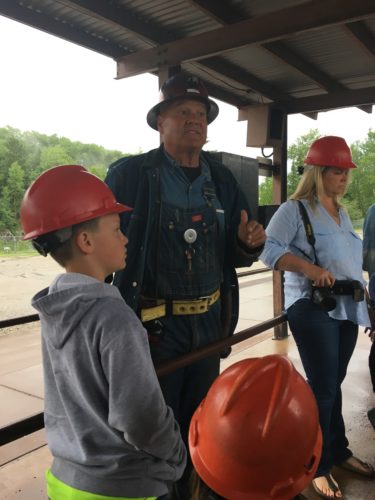
That’s Carl.
He’s explaining about the cage and what we have to do.
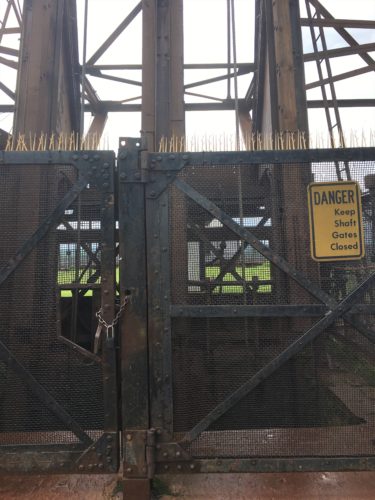
They opened this door and we stepped inside.
The video will show you how tight it was! And yet, the guide told us they’d put 18 men in here! I don’t know how, because there were no fat people in this thing and there were only 12 of us.
I think the spikey things on top are to keep the birds away.
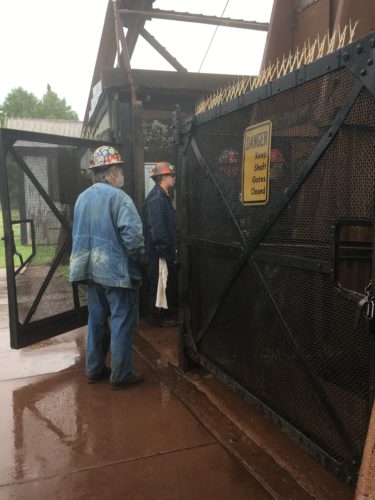
Here we go!
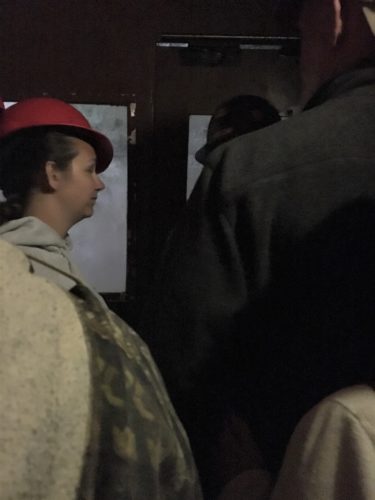
In the cage (elevator).
It took us a long time to get down!
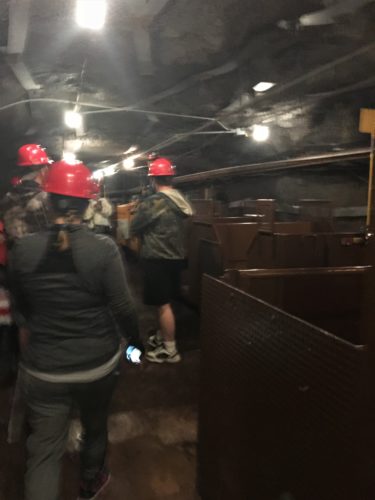
Climb aboard!
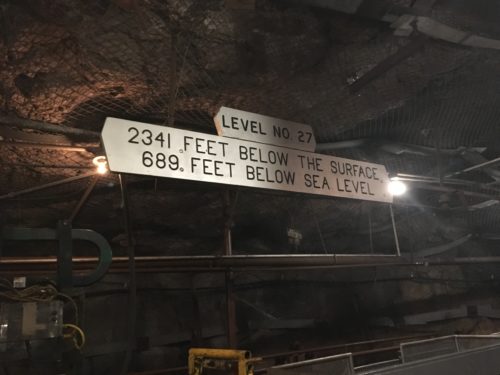
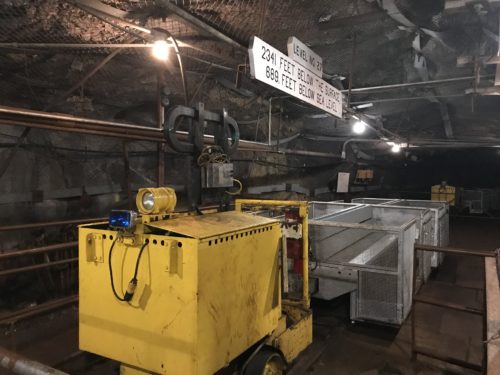
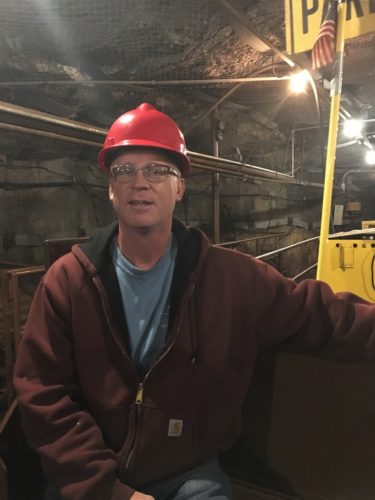
He’s back in his work environment! : )
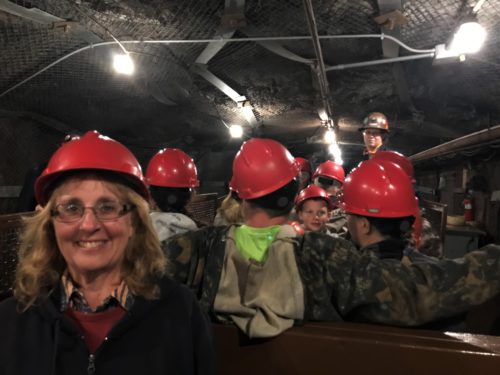
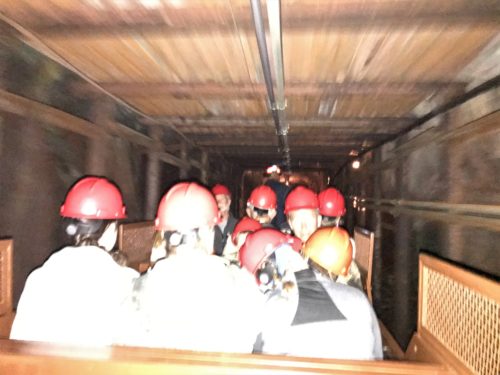
This is what you get when you try to use the flash down here. : )
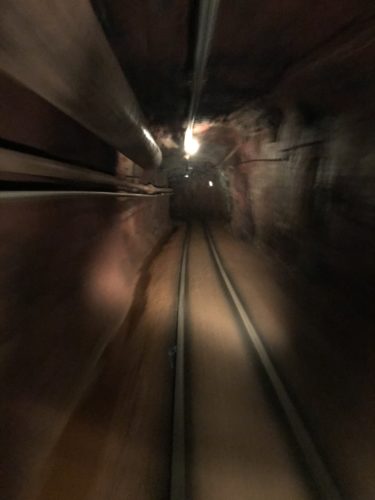
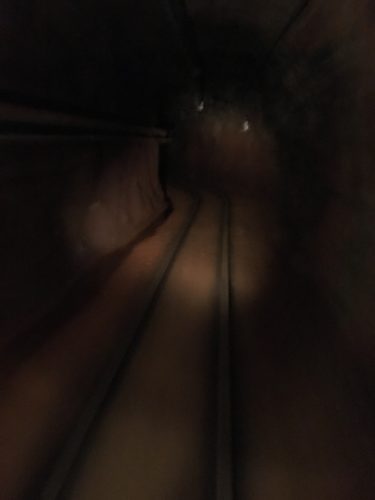
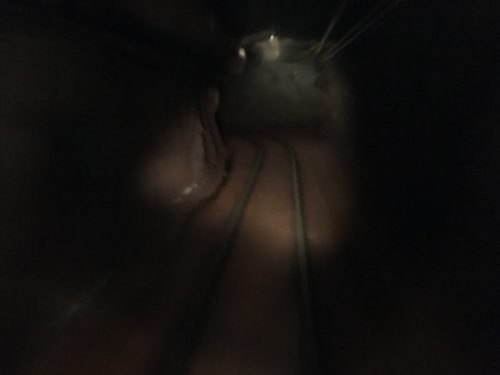
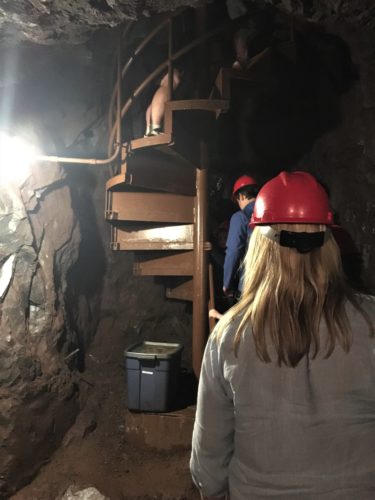
First, we went down this staircase.
After the next ‘cavern’ part of the tour was over, we had to go back up.
Yes, this picture is out of order. : )
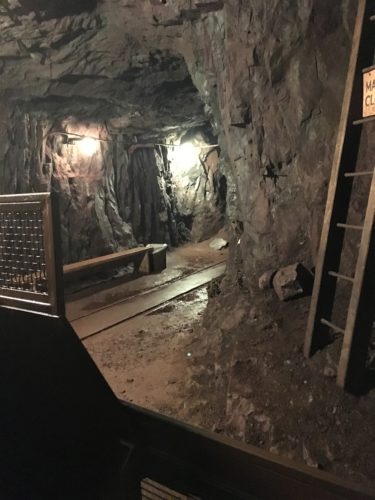
The men didn’t have a spiral staircase.
They climbed these ladders. Ugh!
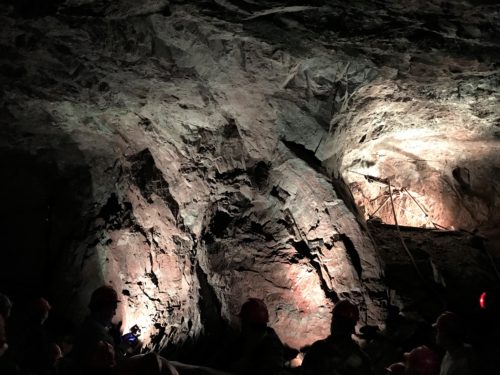
Carl took us into a gigantic mined cavern to explain how things worked in the miners world.
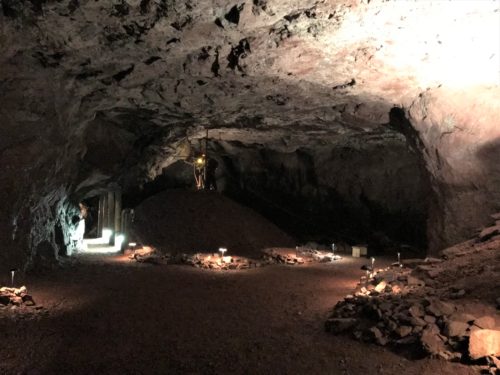
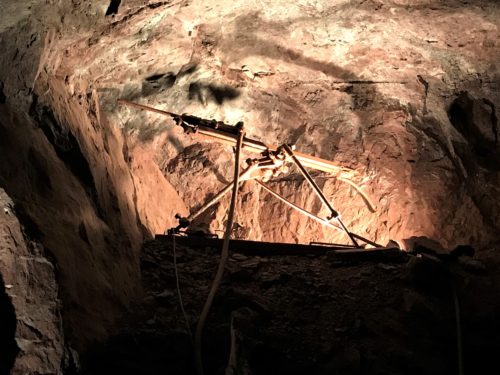
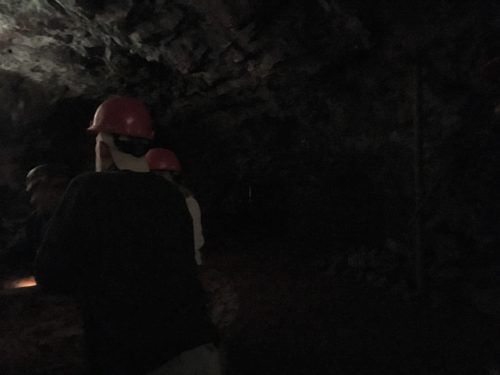
Did I mention it’s really dark down here?
At one point, Carl called us all close and they turned out what little light there was, just so we could see what total and complete darkness looks like.
If there was a cave in or something, and their lights (especially candles) went out, that’s what they were trapped in, trying to find their way out. YIKES!
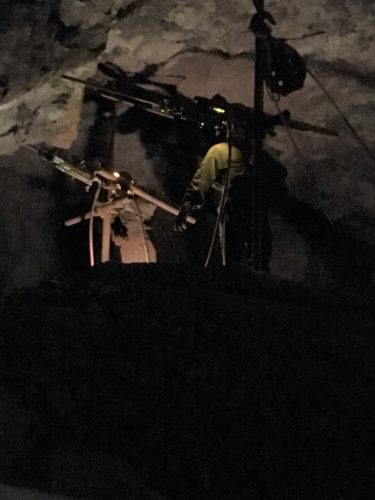
They had a couple of displays set up, but they were hard enough to see with the naked eye. Pictures were next to impossible.
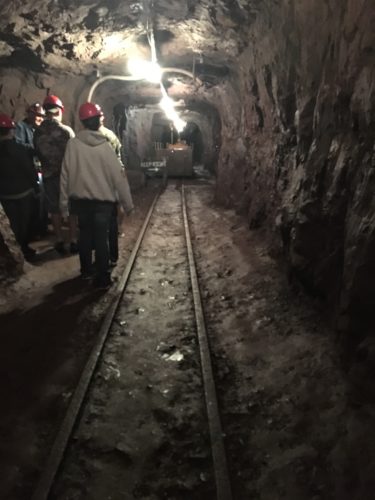
Time to head back up!
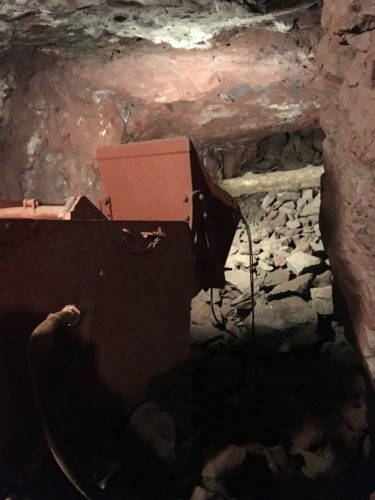
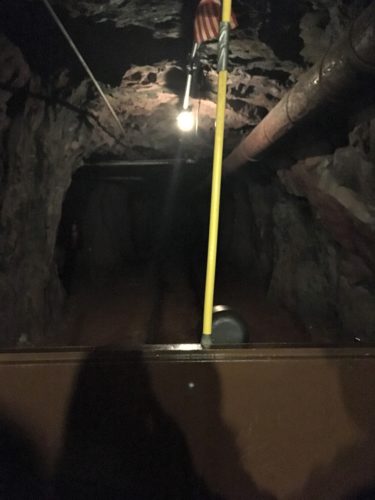
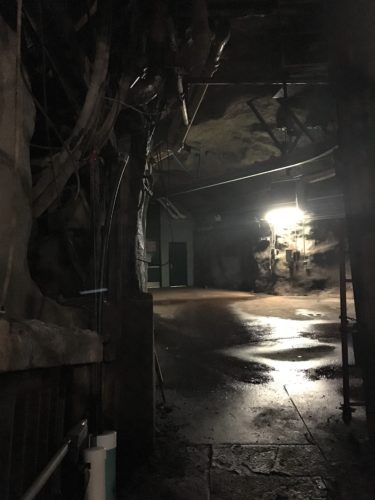
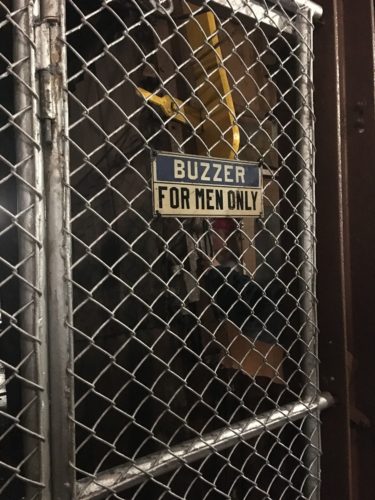
Blaine found humor in this sign, thinking men vs women rather than men vs ore. : )
They told us women didn’t work in mines until the 1970’s. As you can imagine, it was met with much resistance.
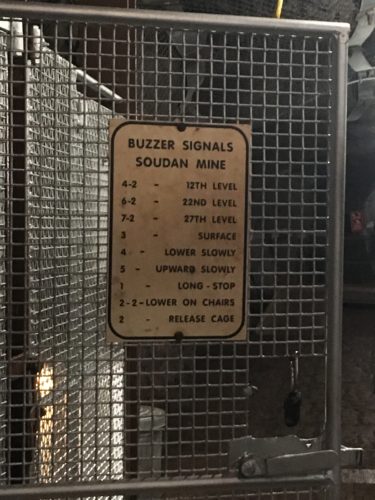
This buzzer system is how they communicated.
Buzzers for people and bells for ore or equipment.
After the 1 ½ hour tour, we were taken back to the surface in our cage and guess who was in there with us? It was Jenny! Good to see her again! She released us and we were free to walk the museum and grounds since it’s a State Park. She also told us to go check out one of the open pit mines at the end of the parking lot. She said it still had snow in it up until last week!
It was foggy when we arrived, and then the sun came out!
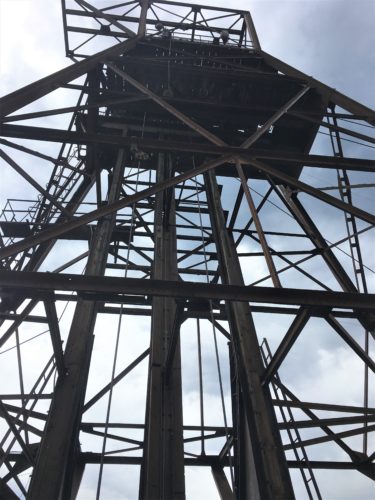
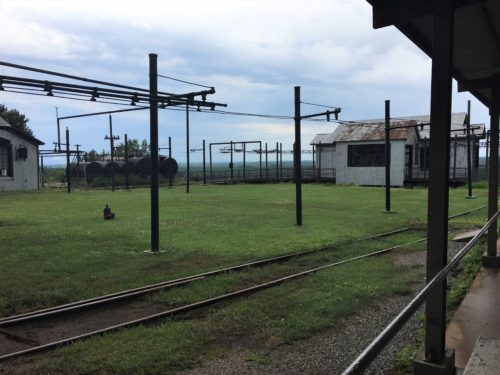
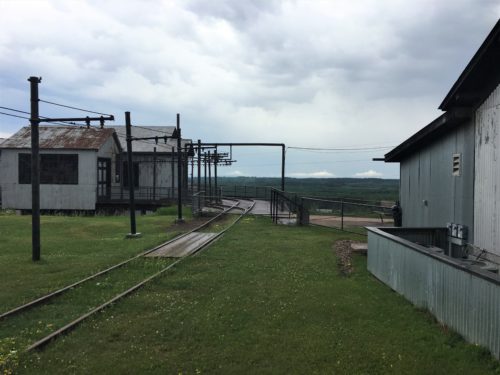
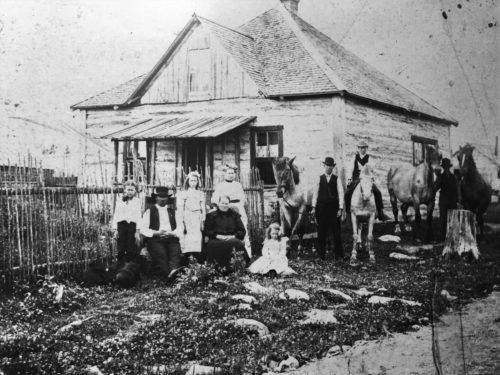

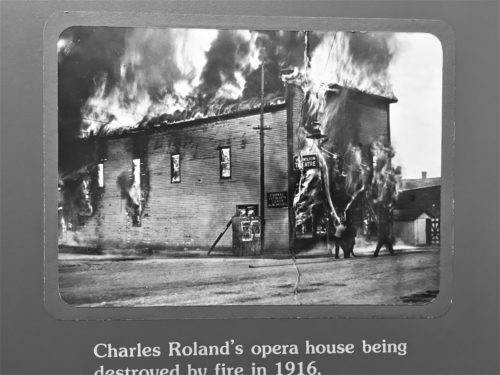
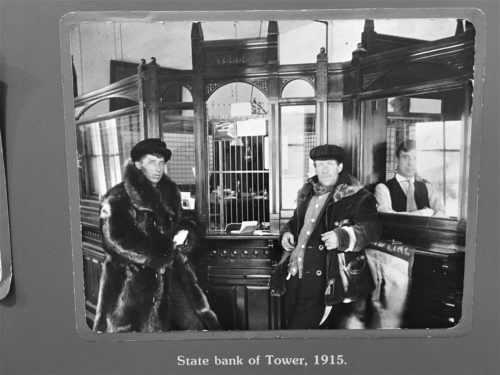
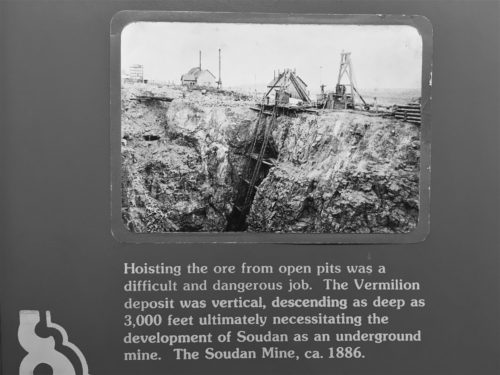
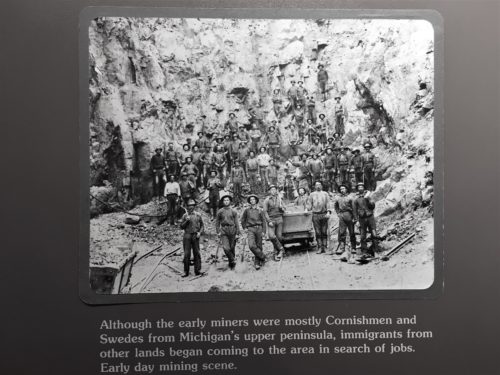
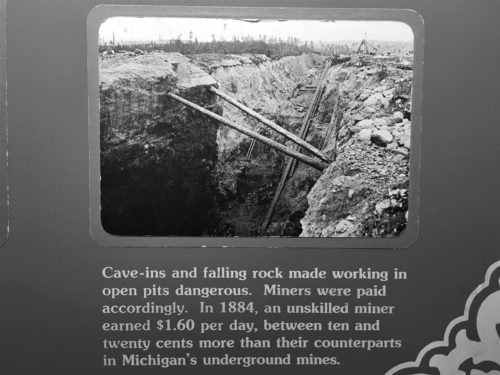
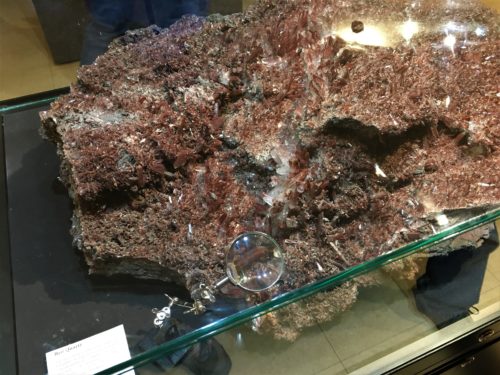
Red Quartz
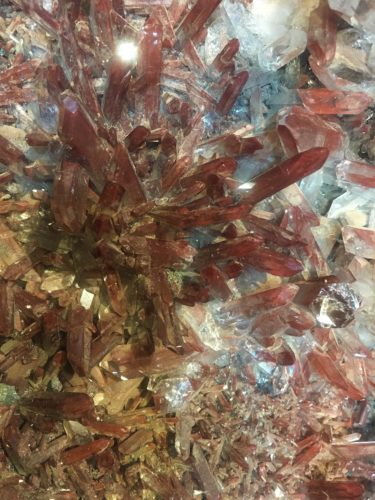
Red quartz is real pretty!

This was a great visual aid for me! Blaine was better able to explain how our cage when up and down. : )
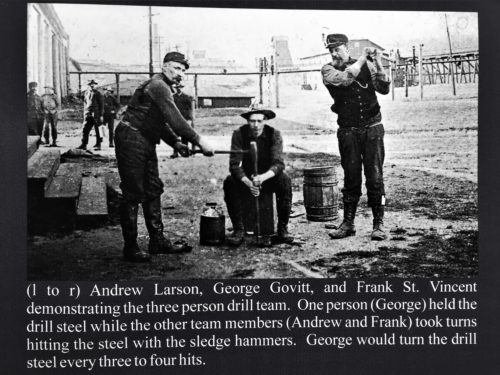
The guy is probably sitting down in case they miss and hit his hand!
Ouch!!
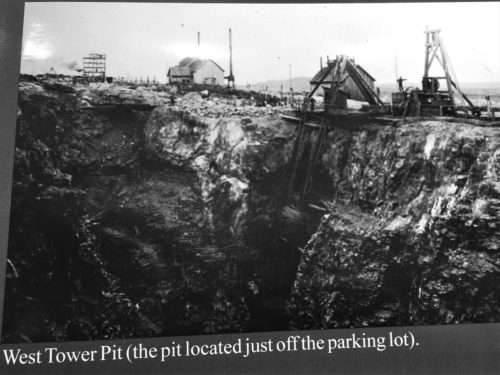
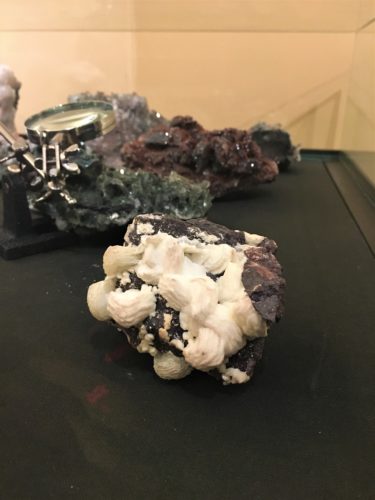
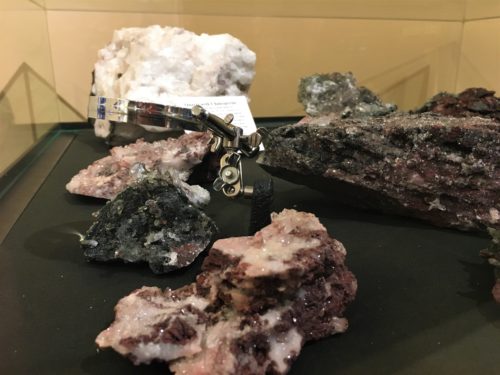
They have these rocks on display in the museum section, too.
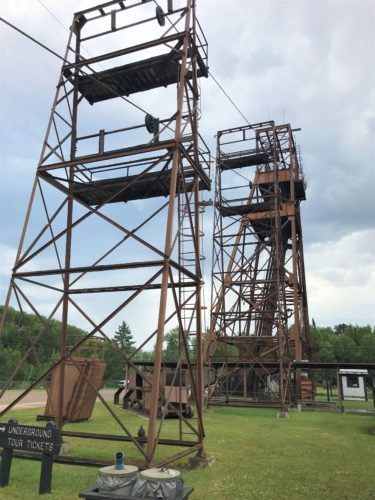
The far one holds the cage we were in.
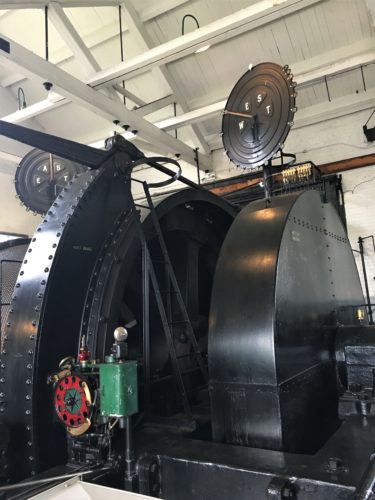
Isn’t this neat!
We’re in the Engine House, built in 1901.
The engine hauls the cage up and down.
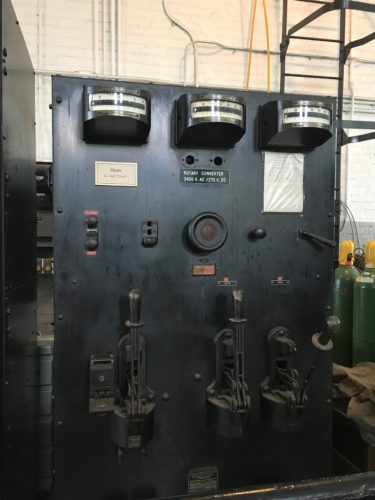
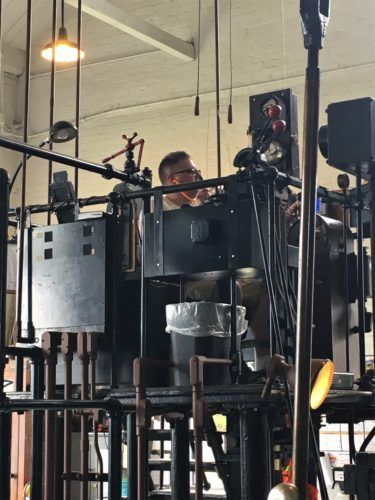
This guy was working the cage hoist today.
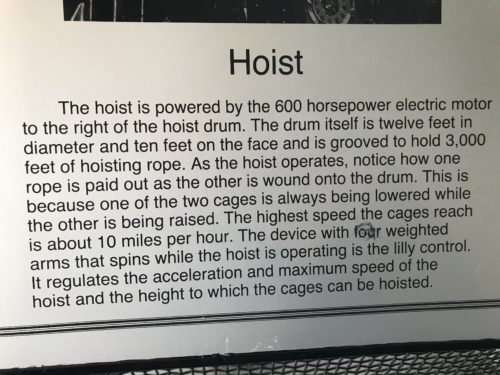
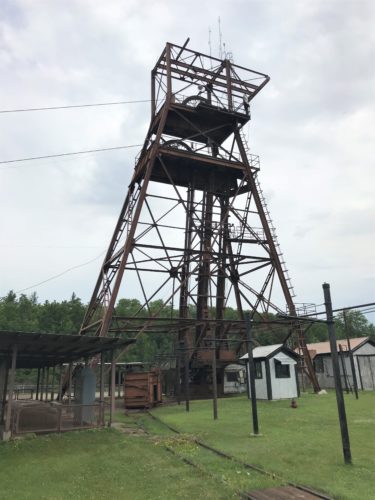
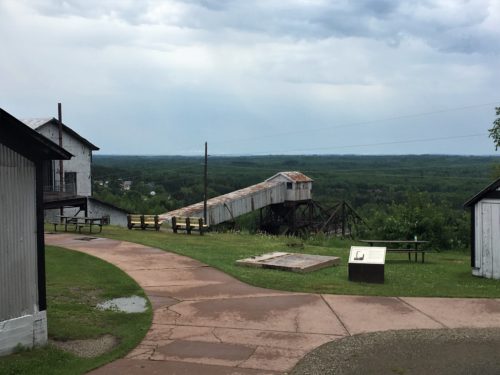
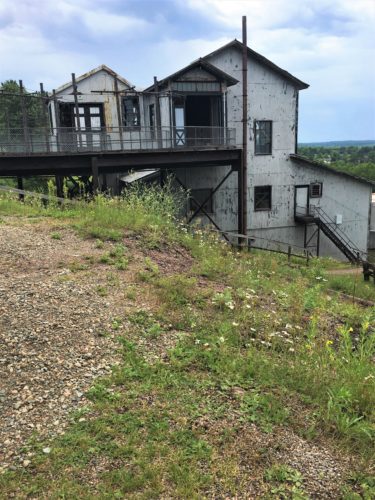
This is the Crusher House, built in 1904.
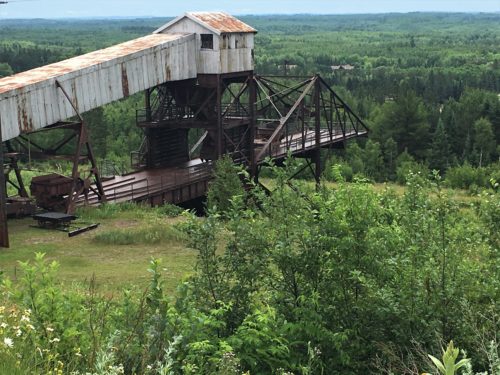
The crushed iron ore when uphill on a conveyor into this house and then dumped out the bottom into waiting cars, which took the ore to the end and dumped it into waiting train cars.
We’ll get back to this part later.
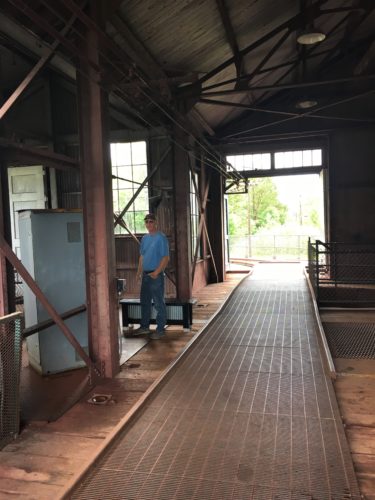
Inside the Crusher House.
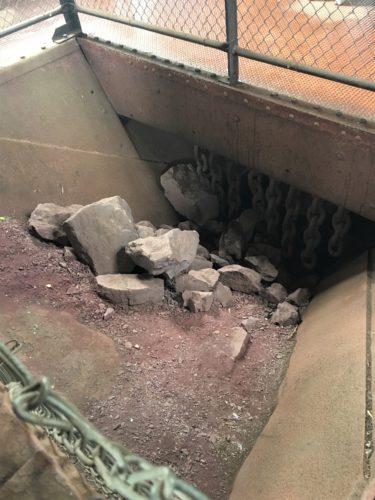
This is the top of the rock crusher. We think the chains just helped keep them from getting jammed up.
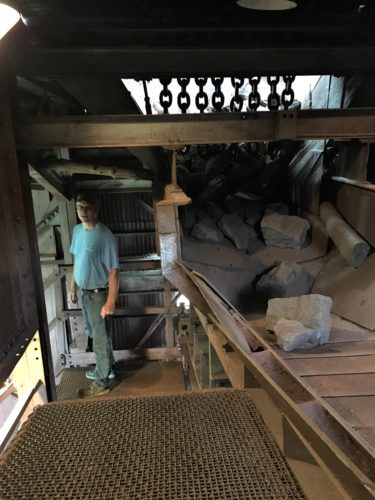
We couldn’t see inside to see the actual crushing part.
This is just part of the conveyor.
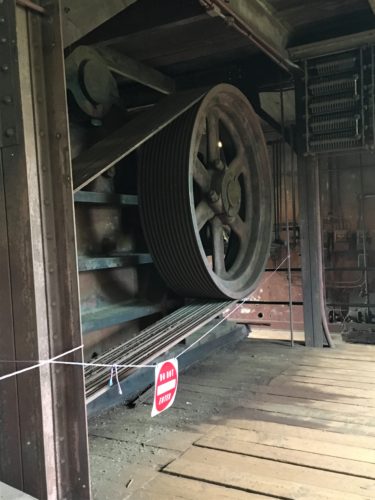
This wheel was gigantic!
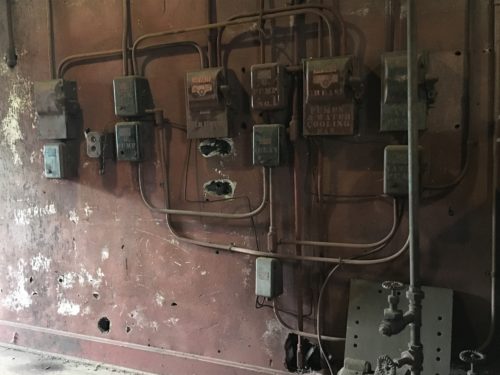
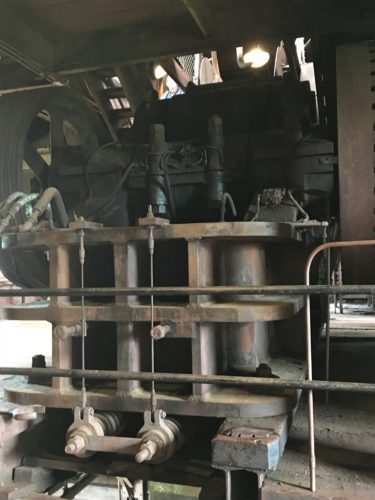
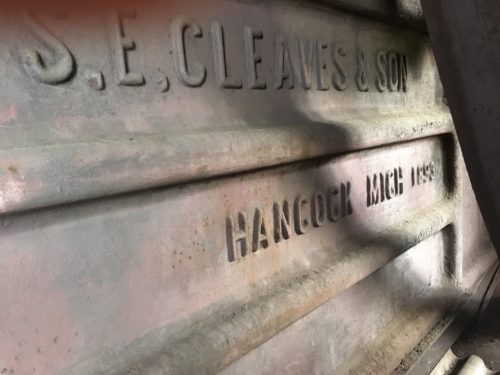
This is on the actual crusher showing it was built in 1893.
We couldn’t even imagine how loud it must have been in here when it was running!
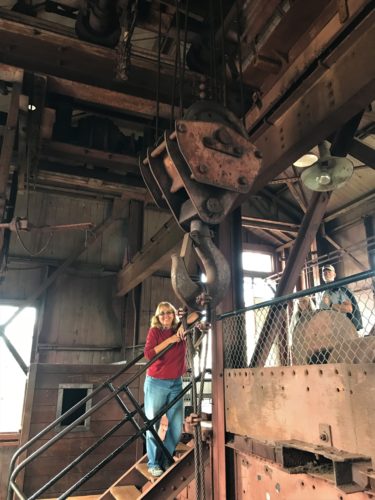
Look at the size of that hook!
No idea what it was used for.
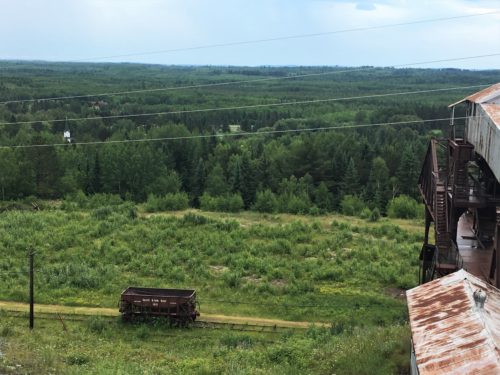
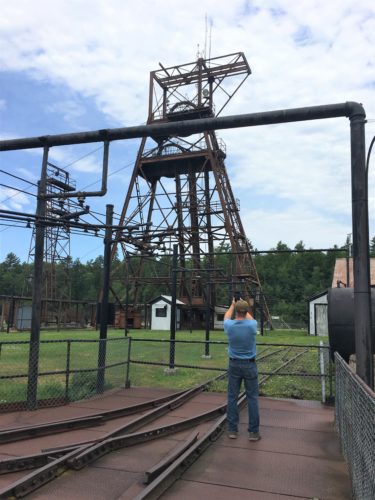
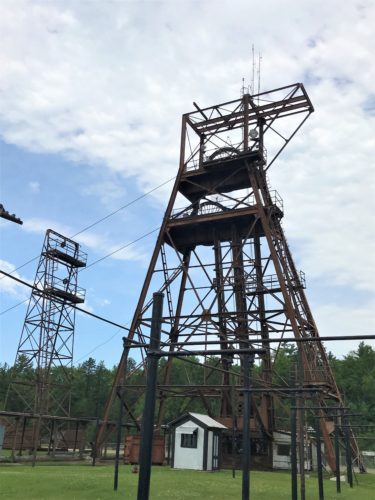
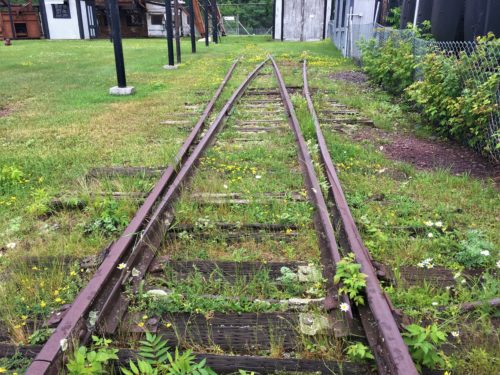
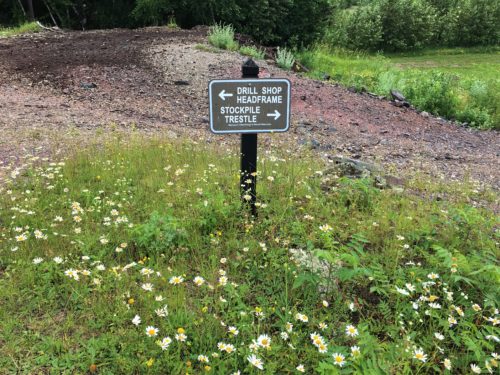
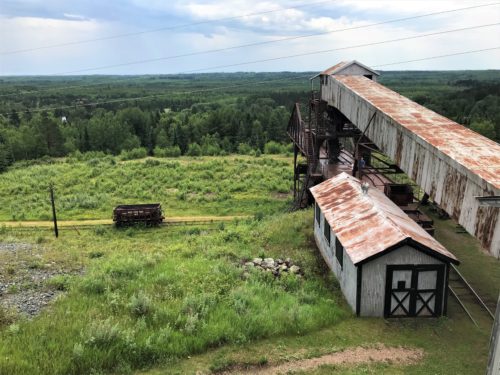
What beautiful views!
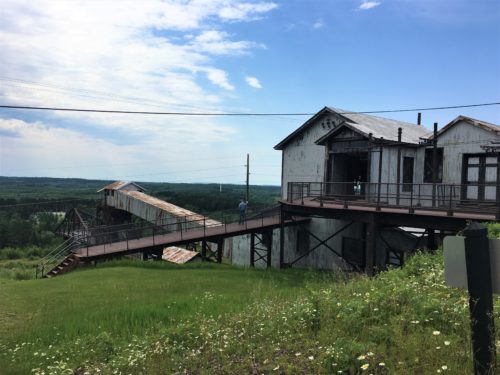
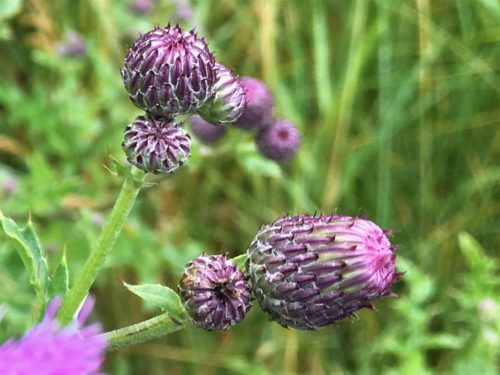
My first picture, the flowers were blurry, but this was in focus.
I think it’s really cool and pretty, to boot!


Original flooring
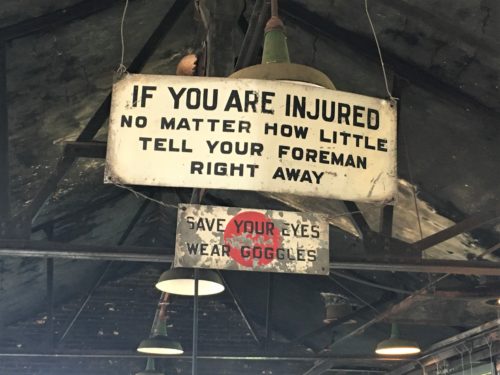
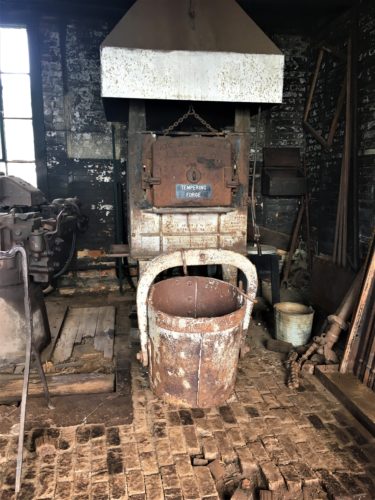
Tempering Forge
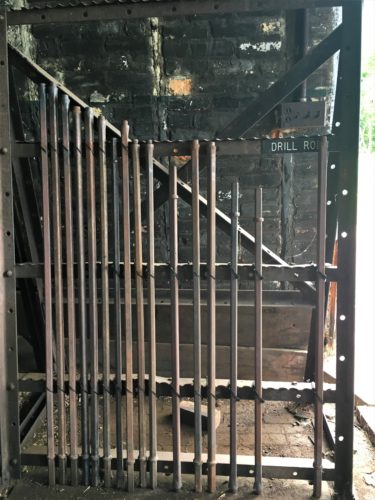
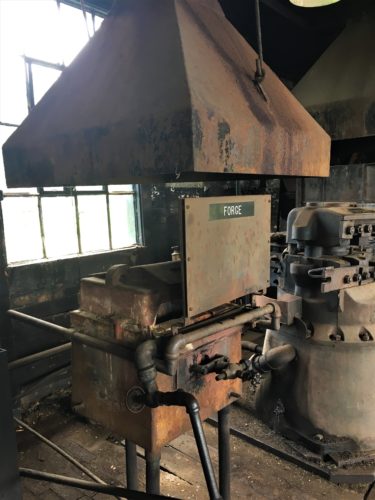
Forge
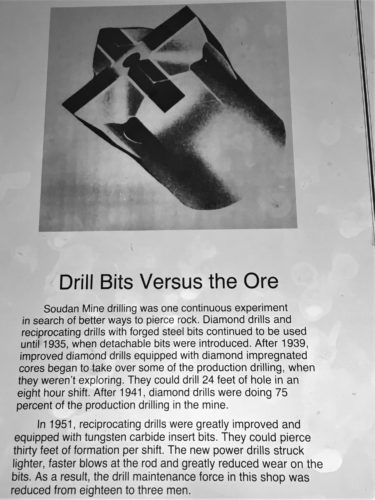
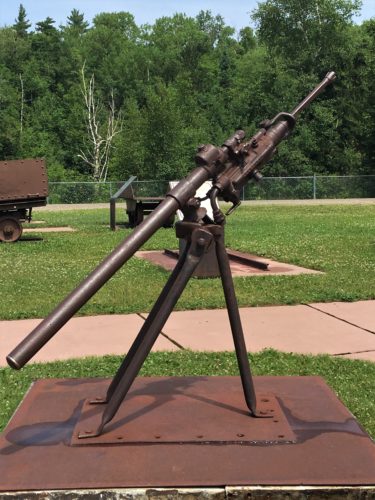
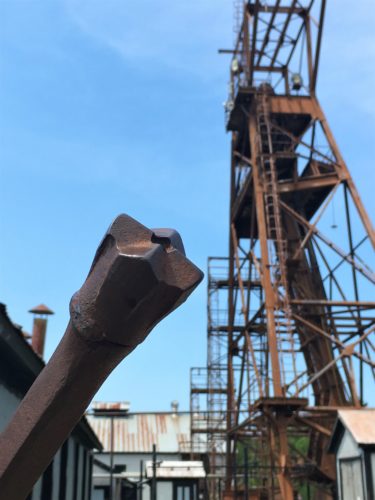
Sure doesn’t look to me like that could cut through hard, heavy iron ore . . .
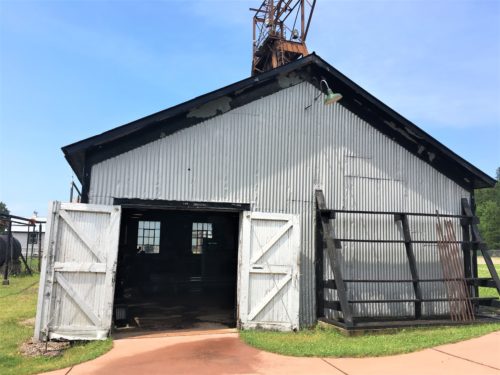
This is the drill shop added in 1917.
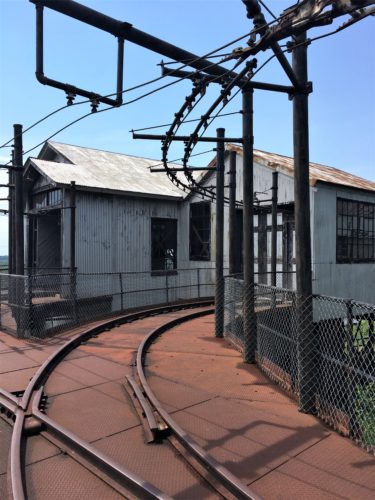
That’s the rock crusher building. Notice the electric “trolley-type” lines for the cars?
They took the ore and crushed it here to put it into train cars waiting below on the tracks.
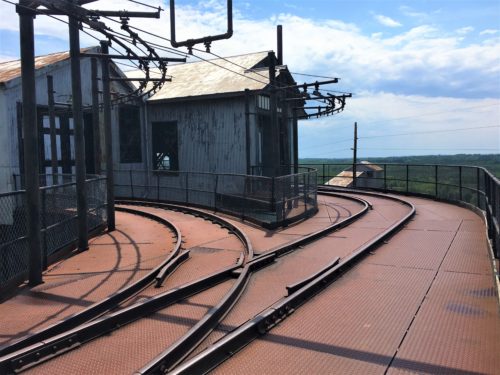
I waited a really long time to take this picture, so I hope you enjoy it. : )
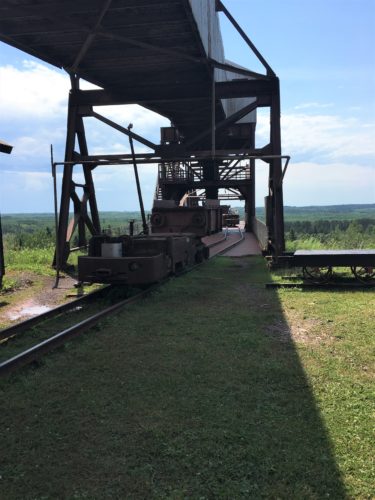
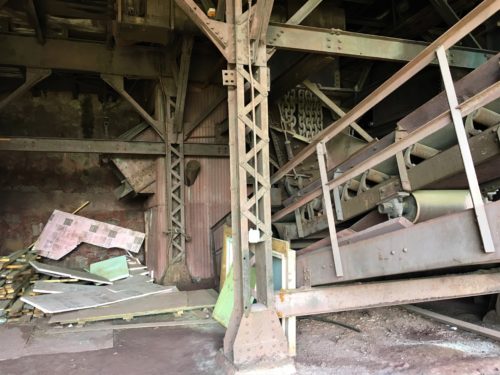
Not sure why they can’t clean up the trash in here . . .

Iron ore left in the cart.
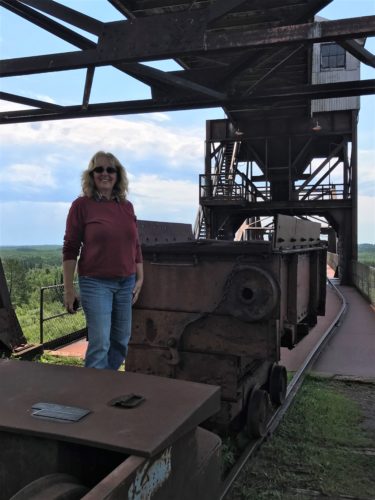
Yes. Sometimes I climb on things like a little kid too!
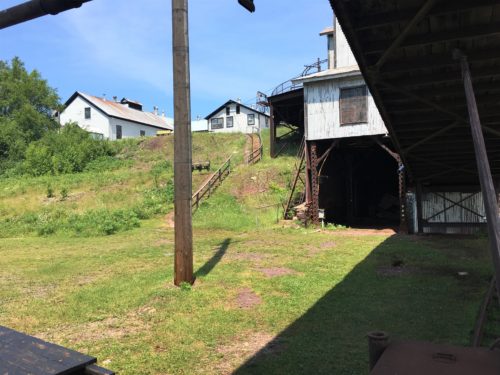
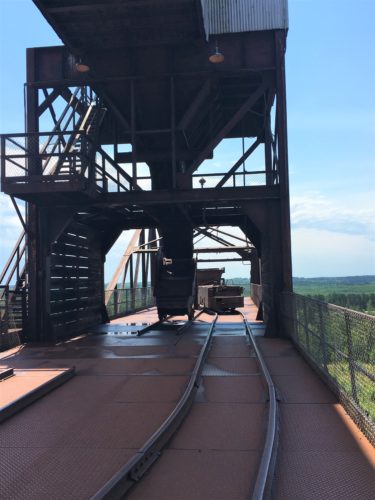
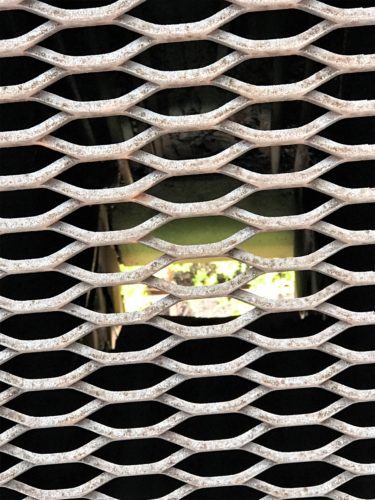
You can’t really tell, but this goes a loooooonng way down to the ground!
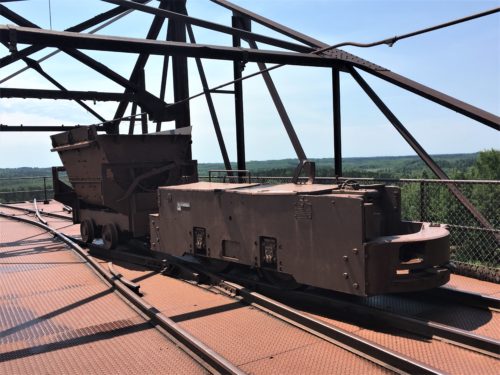
Electric powered.
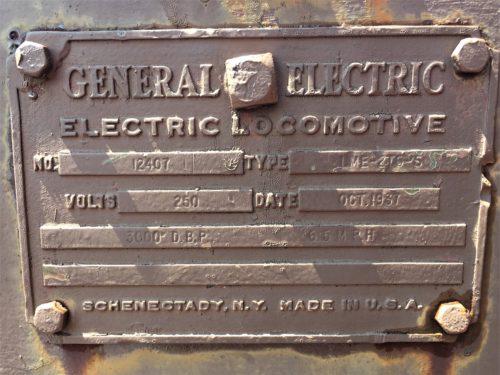
I didn’t know GE made stuff like this!
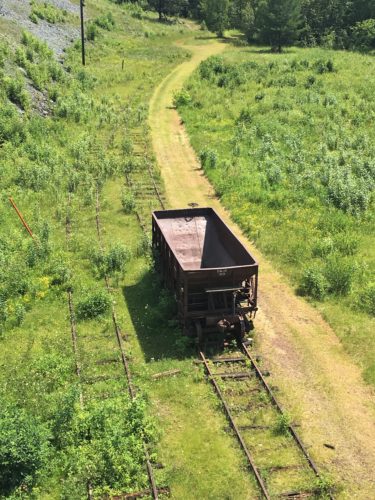
They left one abandoned train car.
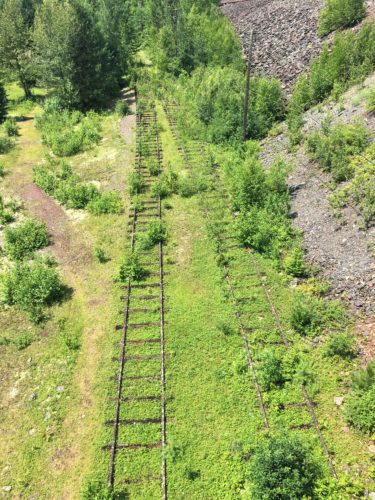
How long before all vestiges of this are gone?
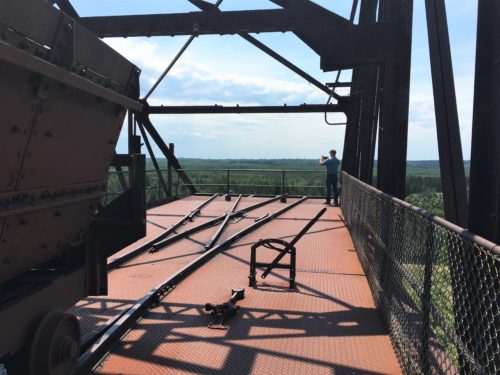
After the rocks were crushed, they got dumped over the side into waiting train cars.
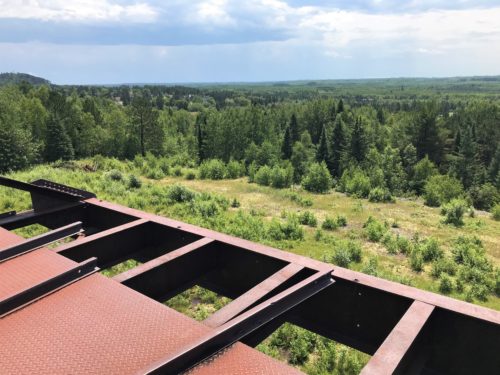
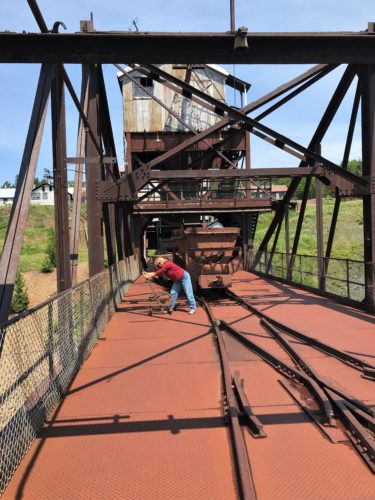
The lever to switch the tracks. It actually moved – but the tracks didn’t. : )
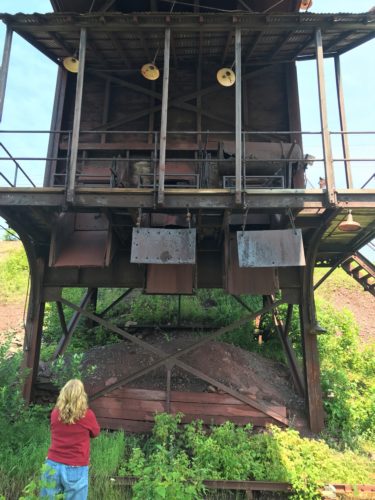
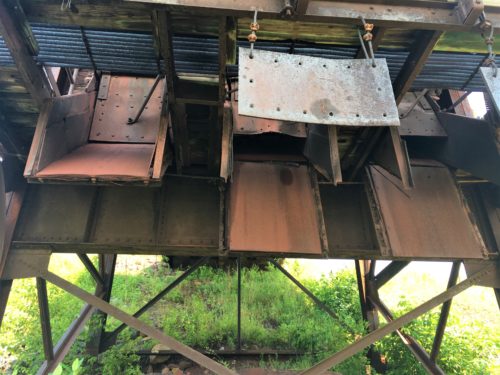
We think the metal plates were to keep the rocks from flying over the rail cars.
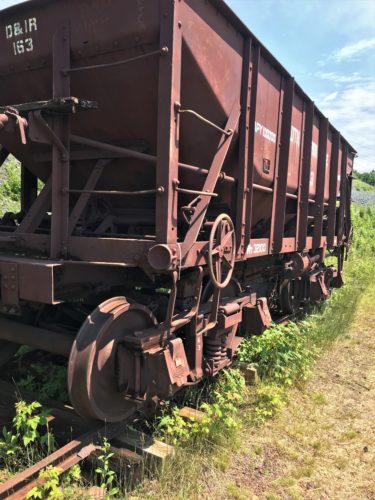
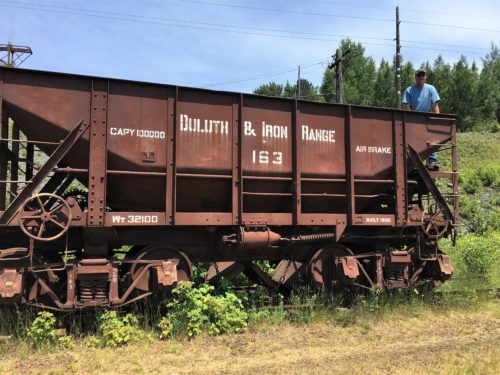
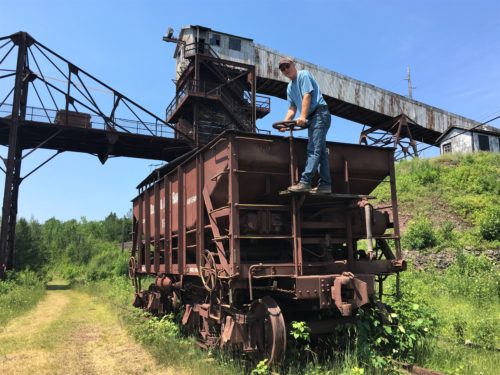
Climbing like a kid!
Good thing no kids were around or we’d have parents upset with us!
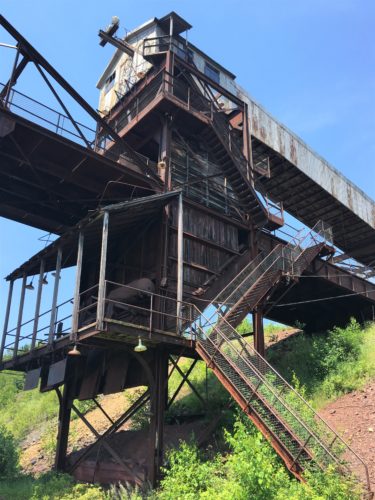
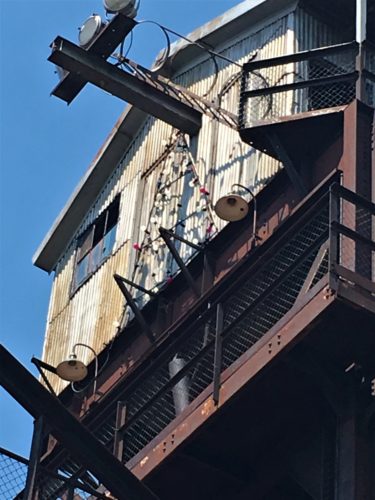
Merry Christmas!!
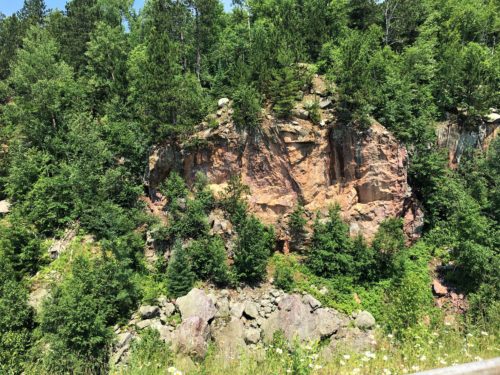
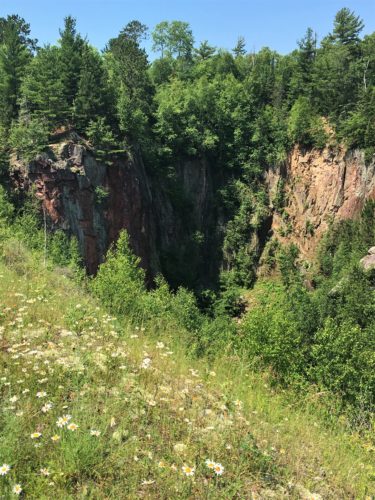
This is one of the open , mining areas.
From the picture, you really can’t tell how deep this is!
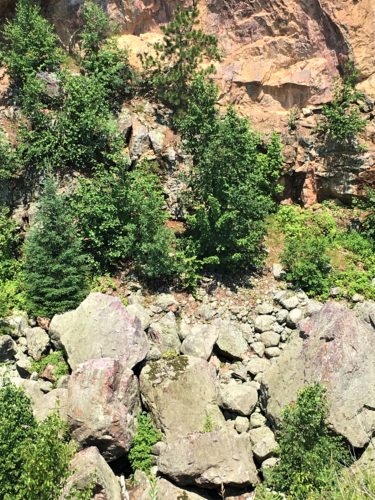
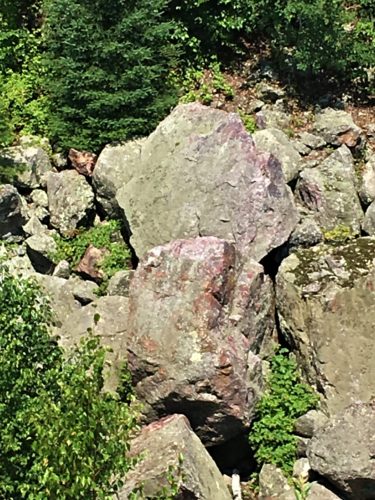
Look at the pink in these boulders. Do you supposed that’s red quartz like we saw in the museum?
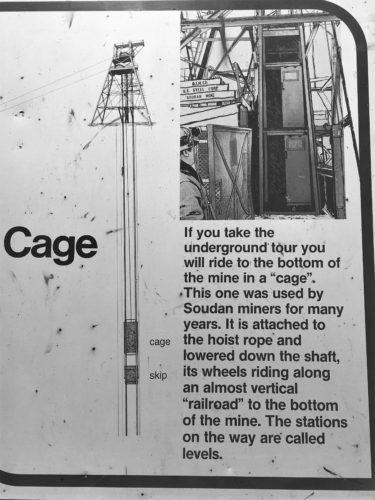
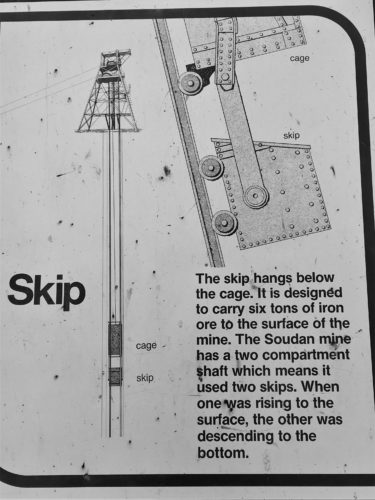
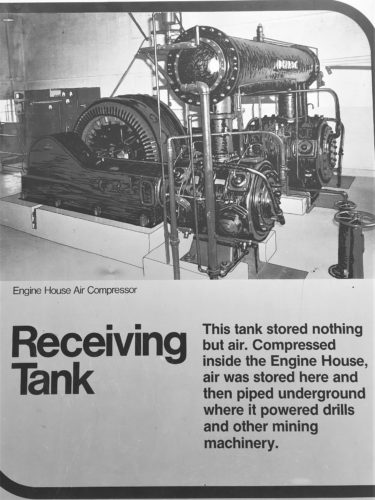
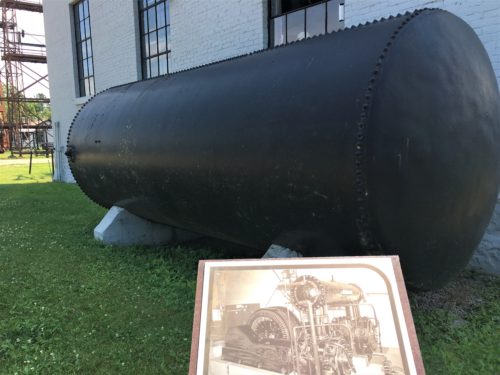
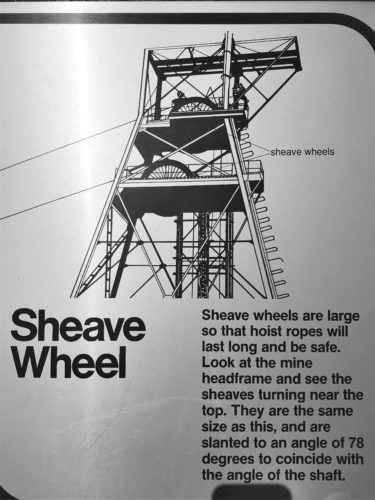
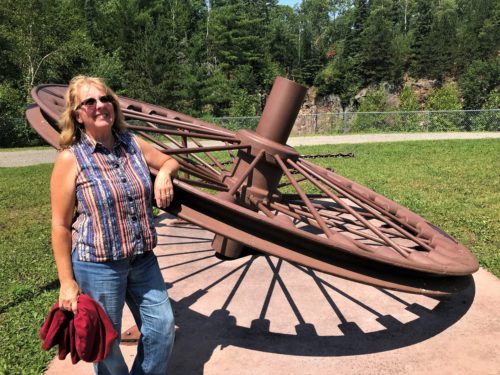
I have no explanation . . .
But I know Blaine wanted a perspective picture.
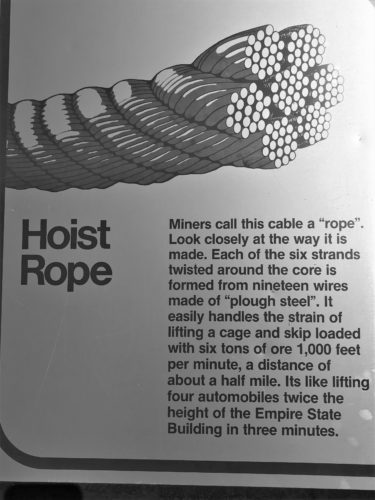
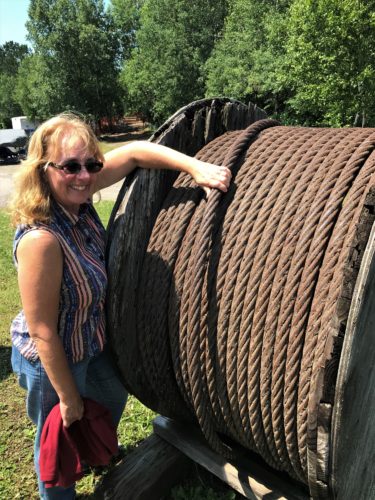
An example of the hoist rope they used to pull us up and down into the mine.
We finished up the actual mine part and headed over the pit Jenny told us about.
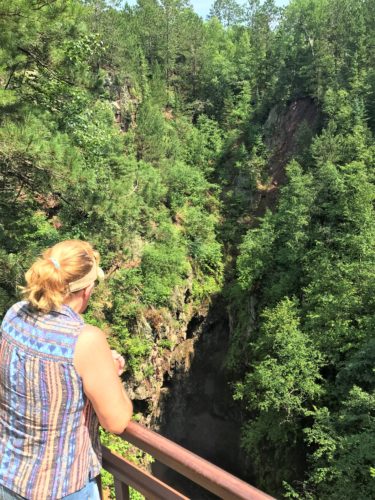
THAT is an abandoned open pit mine. Look how deep it is!
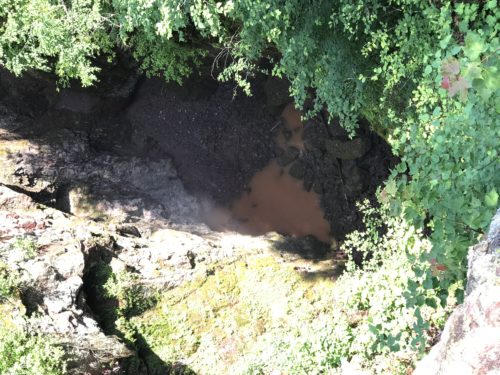
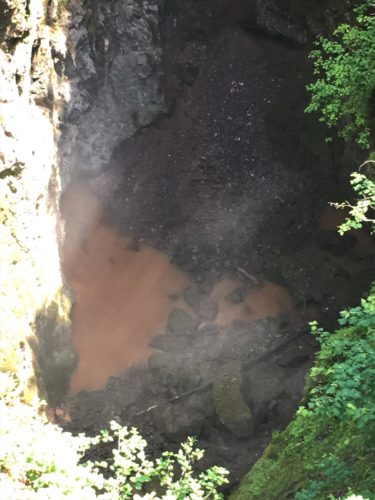
Down there’s where the snow was just a couple of days ago.
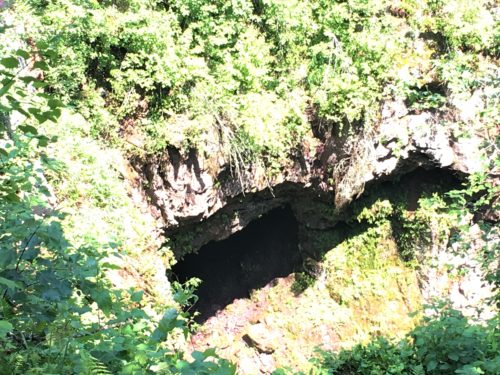
An old shaft (or whatever they called those sideways ones).
We had a great time here! Highly recommended!
We had considered watching the parade, but by the time we returned, the 1pm parade was well underway. In fact, since it was 2pm, we expected it to be over, or nearly so. But it was still in full swing! We thought about watching for a bit, but all the streets were lined with cars and the glimpses we got looking up the side streets showed people 4-deep. Nah!
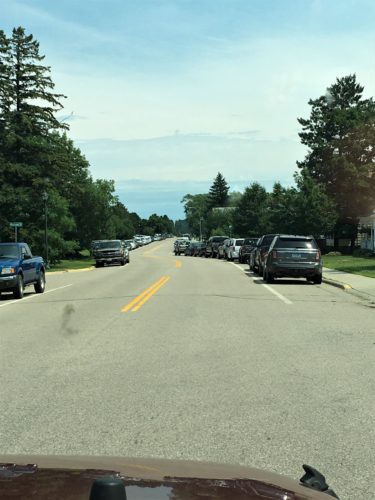
One of the back streets in Ely.
See how the cars are lined up? It was that way everywhere!
Instead, we took our bikes out to check on the Miners Lake trail (also a Jenny suggestion from yesterday). Whew! There was a lot more up and down than I thought there’d be. There are signs along the way with information on the 5 mines that were in the area.
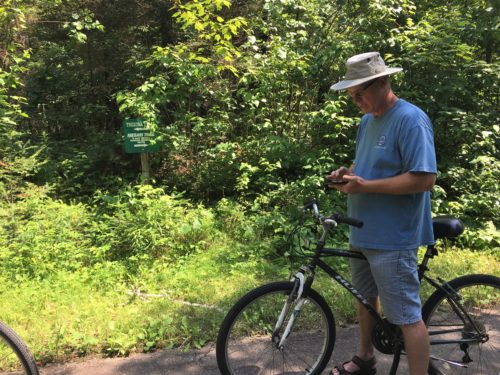
Trying to see where exactly we’re supposed to go. There were a couple of options.
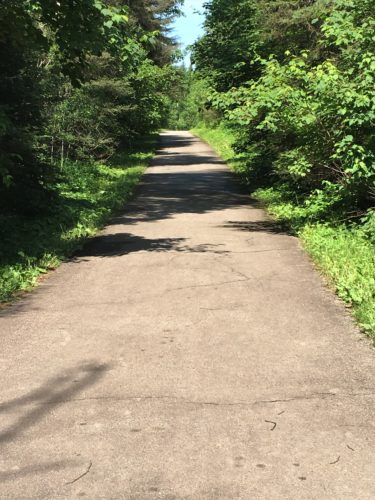
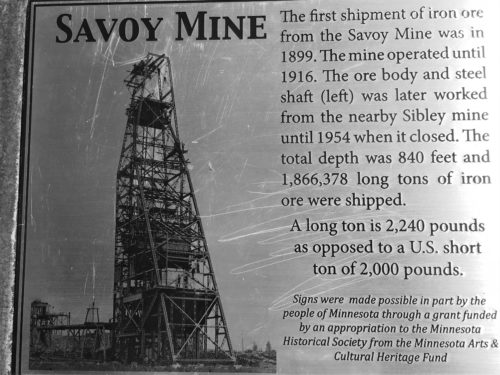
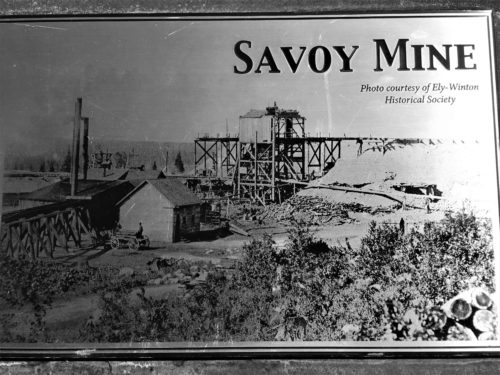
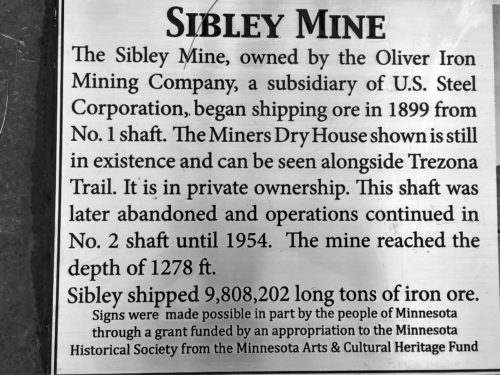
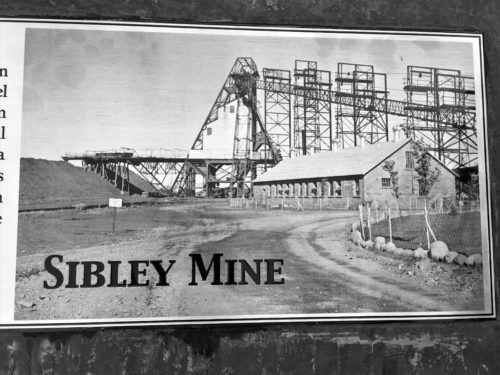
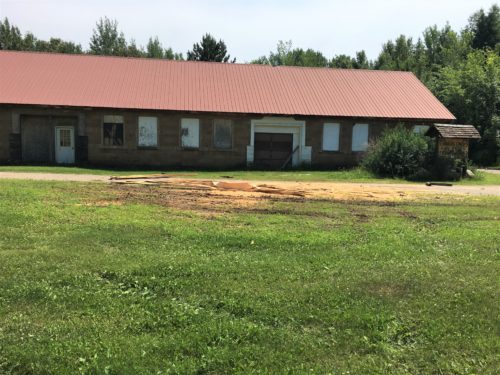
This is the old Dry House mentioned on the info board.
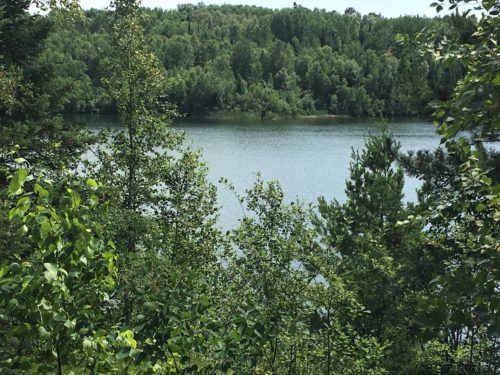
Miner’s Lake.
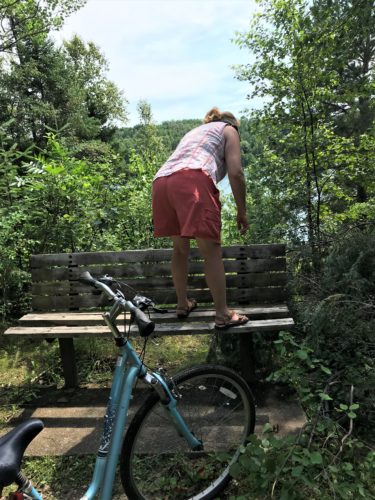
Honestly. I just don’t know what he’s thinking sometimes . . .
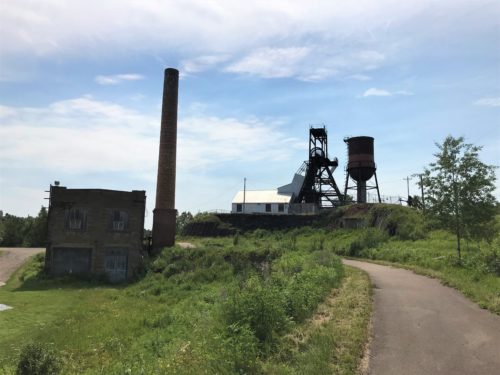
The Pioneer Mine we visited the other day – – from a different angle.
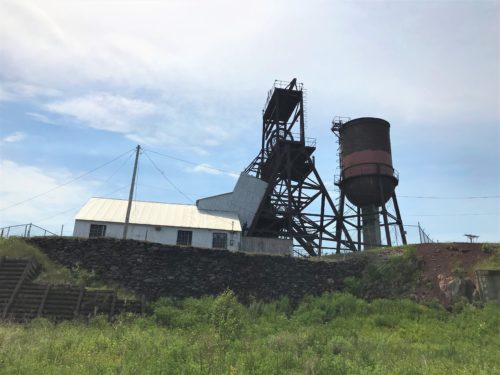
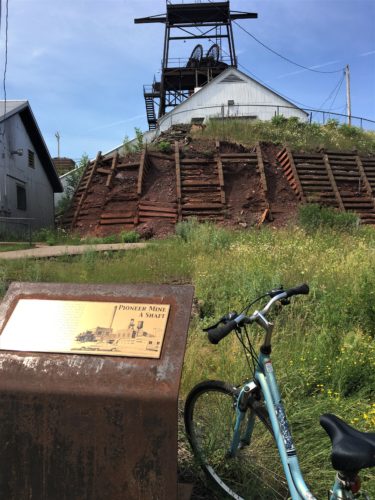
They’ve had to put up a bracing wall here.
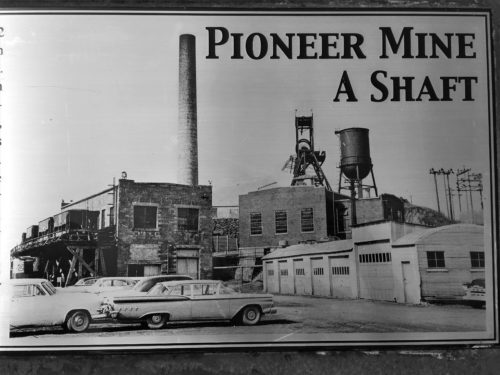
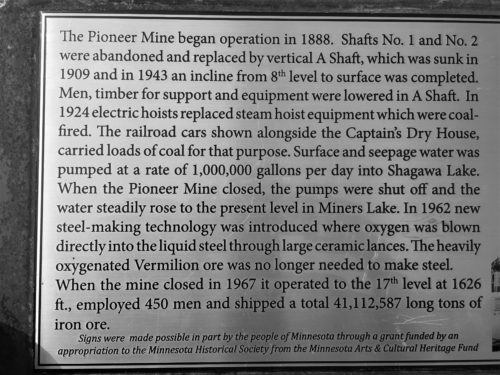
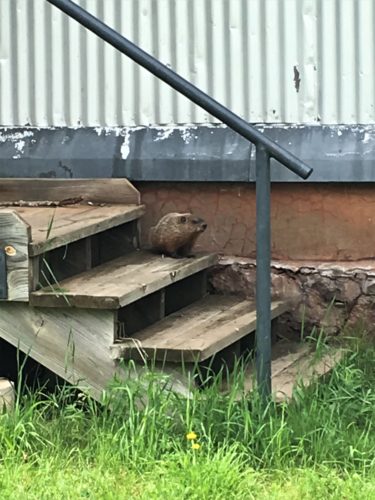
Well, look who we found!
He seems to be living in the foundation. Probably not the best place as far as the building is concerned . . .
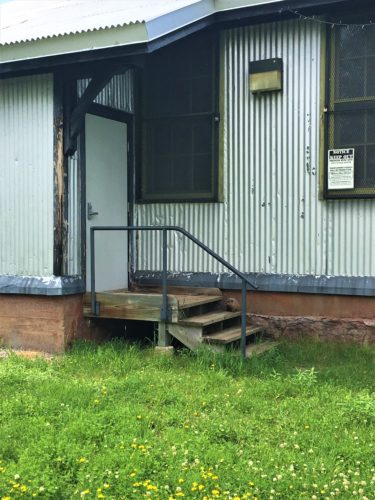
This is the Miner’s Dry House, by the way, built in 1925.
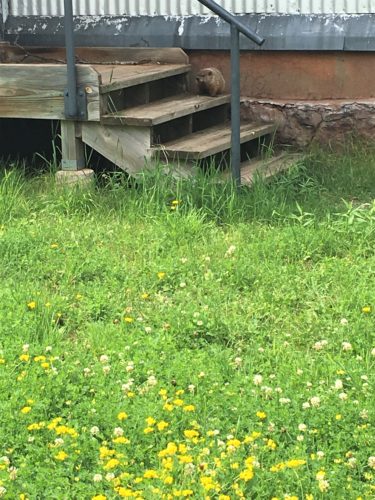
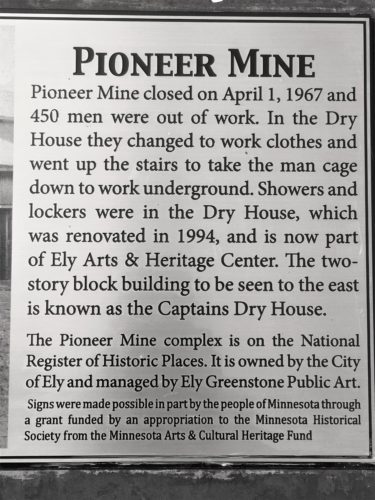
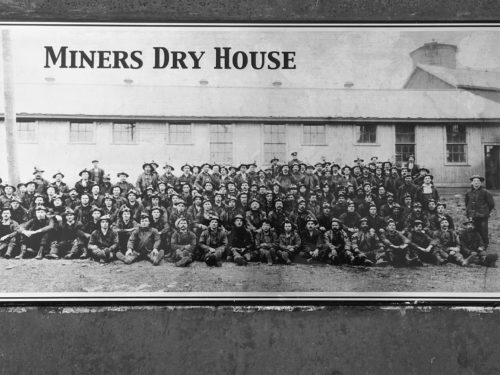
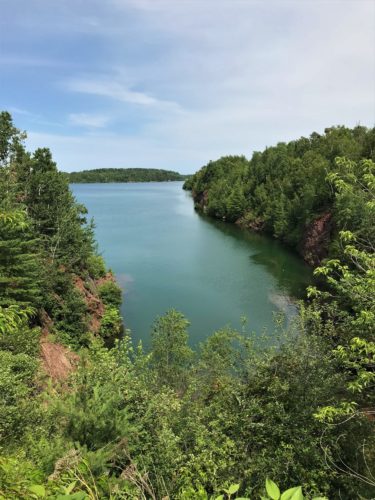
Miners Lake
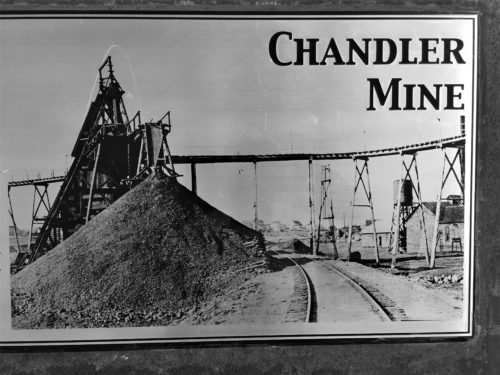
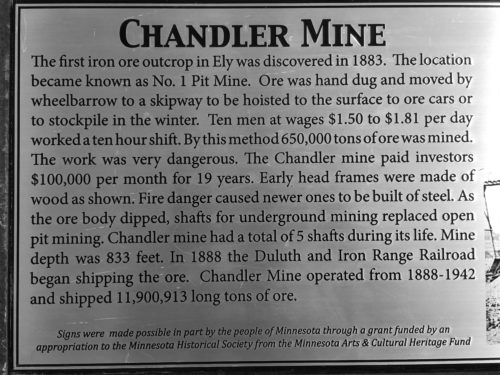

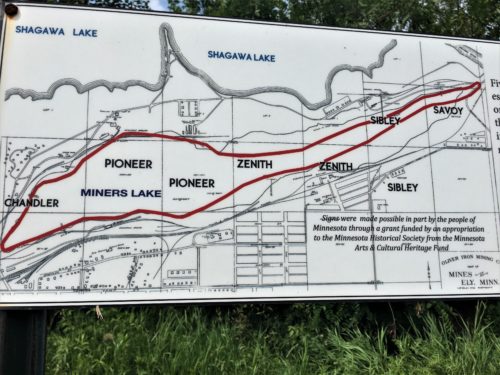
This map shows the outline of Miners Lake and where all the mines used to be.
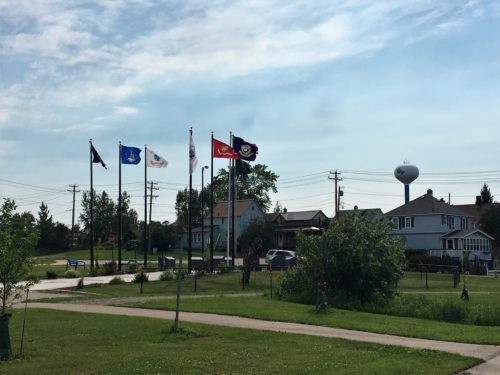
Veteran’s Memorial in Ely
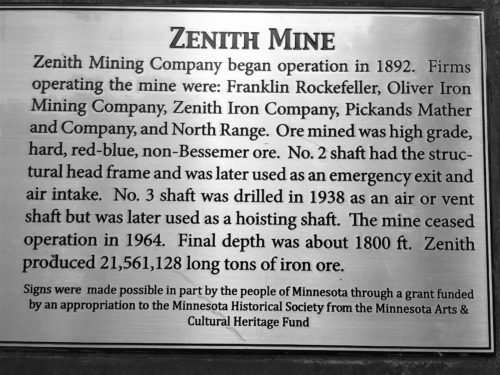
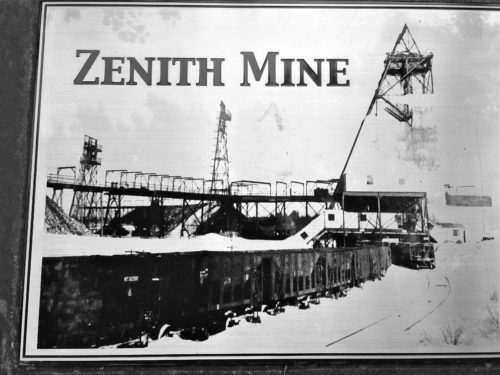
Our ride took us by the National Forest Visitor Center, where we talked to a Ranger about kayaking in the area. He fairly strongly suggested we should rent a canoe and then gave us a good place to go. We’ll do that! Maybe tomorrow!
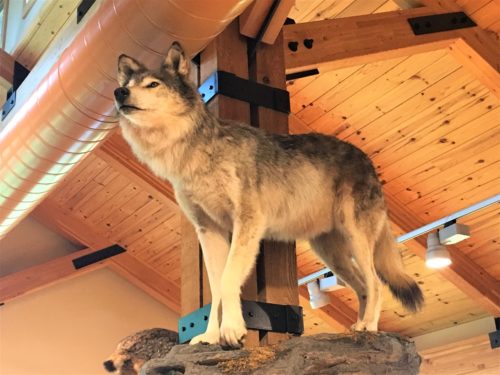
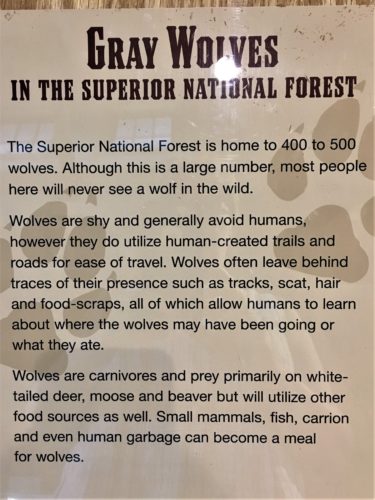
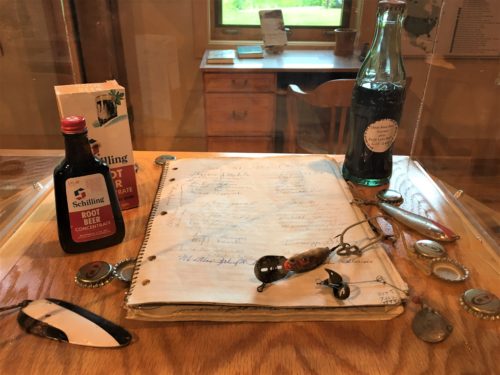
Dorothy Molter’s root beer display.
We’ll talk about her another day.
Dinner tonight was my homemade pizza. Me and Chef Boy-ar-dee work great together!
Normally, we’re heading to, if not actually in, bed by 10pm, but tonight’s the town fireworks! We left and walked out of the campground over by the local college next door. It sits on a hill and you can see any fireworks from here.
Our mistake? Not slathering ourselves in Deet first! Oh, my!! We couldn’t possibly stand still! When it was breezy, they were gone, but as soon as the wind stopped, they tried to cover us!
And yet we felt this strange compulsion to be there. Despite the attack. Despite knowing how we’d pay. Despite knowing all we had to do was turn and run to safety.
Hmmmm . . . maybe we have more in common with our founding fathers than we realized.
Fireworks were great, by the way. Though you’d never know it by the pictures. : )
